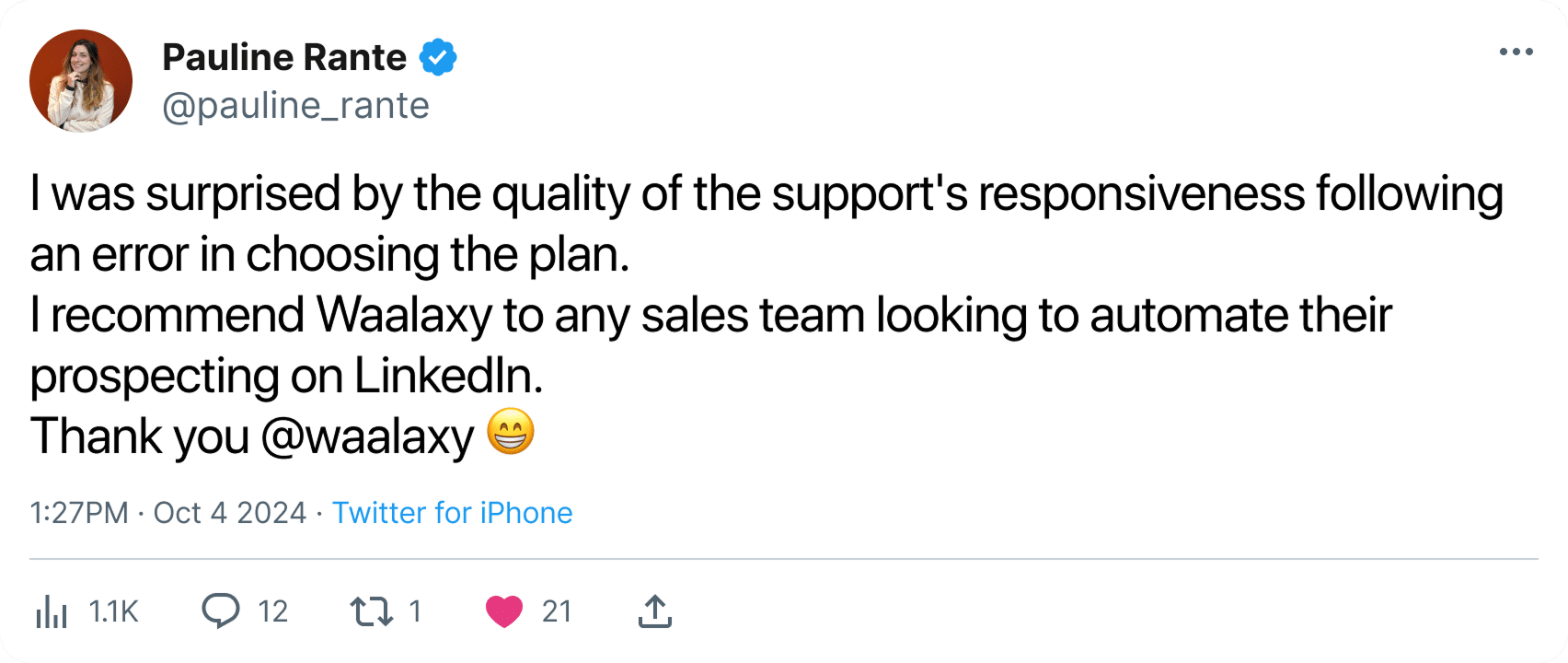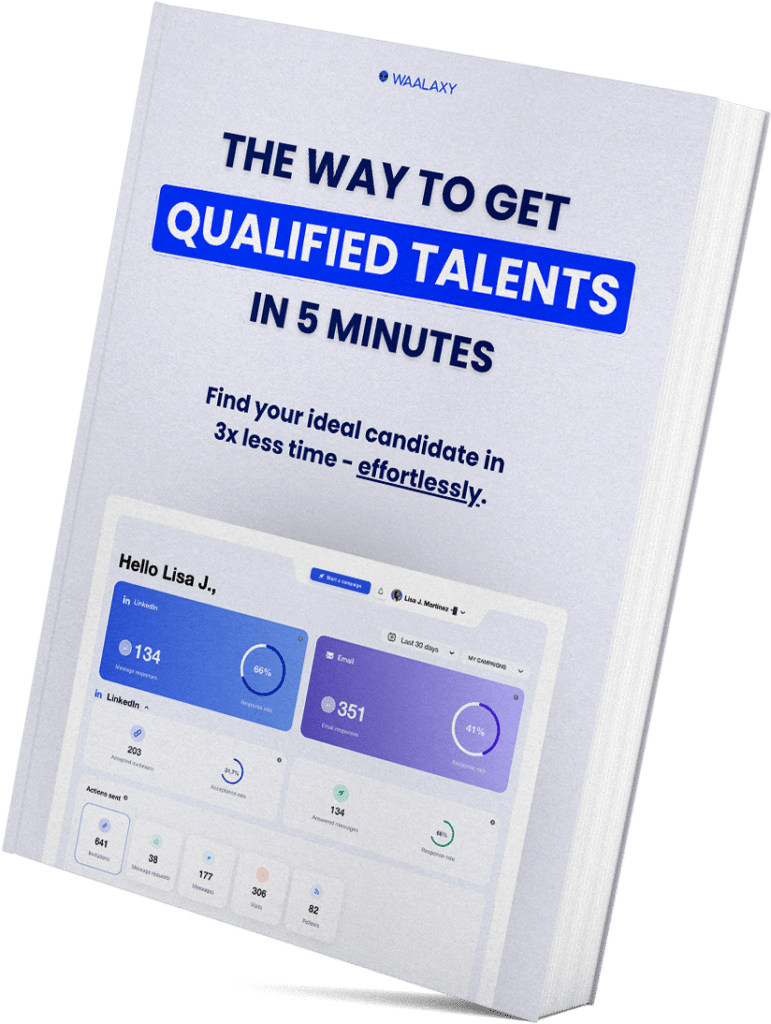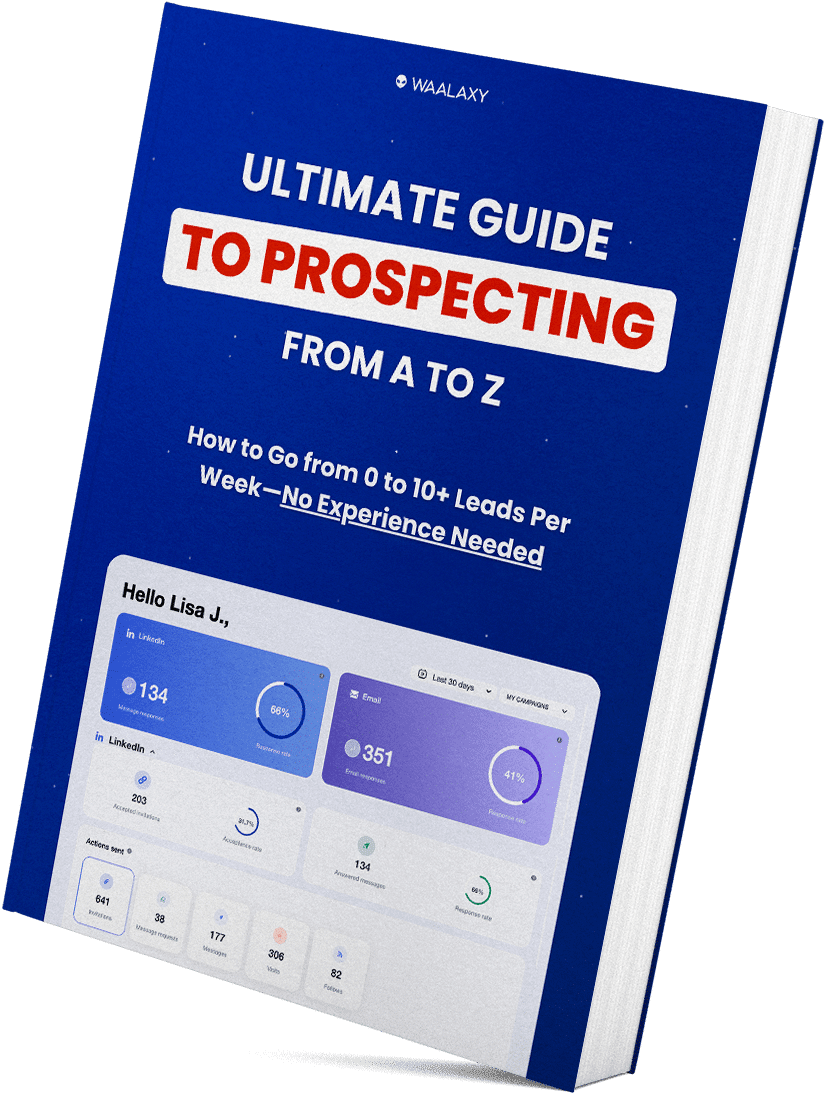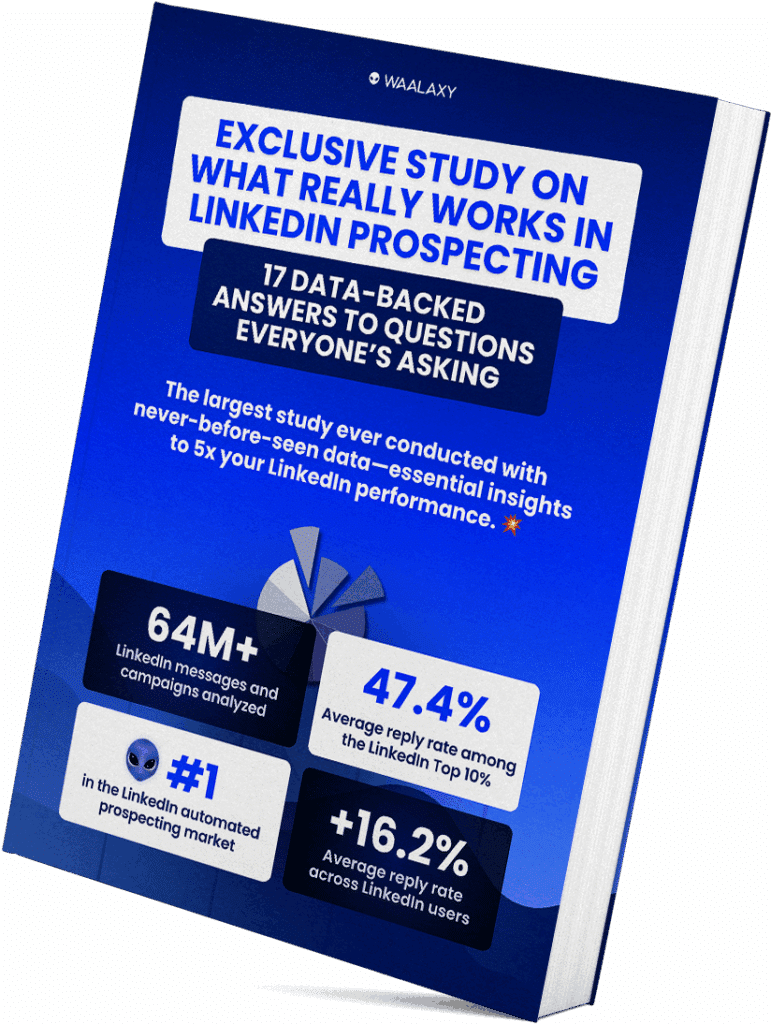Sales Intelligence is the new secret weapon for B2B sales professionals. 🕵🏼♂️
It allows you to spot the right opportunities, qualify the right accounts and send the right message, at the right time. 💬
But today, it’s hard to scan your prospecting without integrating it into your sales strategy. Because, let’s face it, throwing mass sequences at unqualified leads is over!
What you need? Intelligent data and the right tools. ⚒️
In this article, we explain it all, simply, and quickly. 😇
Ready to go? Here we go, and happy reading! (Reading time: 3 minutes).
What is Sales Intelligence?
Sales Intelligence is like a GPS for sales teams. It helps you know where to go, who to talk to, and when to act, so you don’t waste time on leads that will never buy.
Okay, but in concrete terms, what is it? 🤔
It’s all the data collected and analyzed to help you better target, better understand and better sell to your prospects.
But be careful not to confuse it with a CRM:
- 🔵 CRM tells you who you’re talking to.
- 🟣 Sales intelligence tells you who you should talk to.
It goes way beyond the simple database. You’ll use internal information (CRM, website) with external data (public databases, social networks, market signals), to give an enriched, strategic view of your target market. 🎯
You have 3 types of data:
- 1️⃣ Firmographic data ⭢ sector, business size, sales, headcount, location.
- 2️⃣ Behavioral data ⭢ visiting a price page, downloading a white paper, opening an email, clicking on a LinkedIn ad.
- 3️⃣ Intent data ⭢ massive recruitment, fundraising, change of management, adoption of a new tool, post on networks.
It’s not magic, just good data put to good use.
Why has Sales Intelligence become indispensable?
For a long time, B2B prospecting was a bit like playing the lottery.
You’d get a file, send a blind sequence and cross your fingers. 🍀
Today, this model no longer holds, because :
- B2B buyers are saturated with e-mails.
- They spend 70% of their buying journey without ever speaking to a sales rep.
- They expect a highly personalized approach, right from the first message.
If you don’t show you know your prospect, you’re ignored.
With this strategy, you’ll be able to target the right accounts, at the right time, with the right arguments.
Results: 👇🏼
- More responses.
- More qualified leads.
- A faster sales cycle.
If you don’t believe me, here are a few figures that speak for themselves:
- Companies using sales intelligence see a 20-30% increase in conversion rates.
- 78% of sales reps who exploit intent signals have more qualified appointments.
- Sales cycles are up to 25% shorter when leads are correctly scored and targeted.
Everyone works on the same targets, with the same info.
How Sales Intelligence boosts qualified lead generation
You can have the best sequence in the world, but if you send it to the wrong person at the wrong time, it will fall on deaf ears. 🕳️
This strategy creates a more effective, more targeted and, above all, more human acquisition tunnel.
Let’s find out how it works at every stage of the lead generation process. 👇🏼
1) Identifying the right accounts
Like any first step in a good strategy, we need to know who to target. 🎯
Thanks to this strategy, we’ll be able to identify the companies that match your ICP (Ideal Customer Profile) and that are showing signs of interest or change. 🔃
For example ⭢ a 50-strong tech SME has just opened an office in Germany and is recruiting a Head of Sales. You know there’s a growth dynamic and therefore potentially a need. 👀
2) Intelligent lead scoring and prioritization
Not all opportunities are created equal. Sales intelligence enables you to prioritize high-potential leads.
How do you do it? 🤔
Well, by combining criteria:
- 🥇 Firmographic (sector, size).
- 🥈 Behavioral (pages visited, interactions).
- 🥉 Contextual (fundraising, recruitment).
This will enable you to build a dynamic lead scoring, and focus your efforts where there’s the greatest chance of conversion.
You’ll save time, increase your closing rate and, above all, avoid pestering the coldest prospects.
3) Personalized approaches
Once you’ve identified the right account, you need to approach it with the right message.
This is where the data you collect becomes invaluable, as it helps you formulate a personalized hook that shows you understand the prospect’s context.
You can bounce off a LinkedIn post, a news item, a tool used, content consulted.
For example ⭢ “I noticed that you’re in the process of deploying HubSpot at [CompanyName] and I’ve got a tip that might save you from a common error on integration.”
This level of personalization boosts engagement, effortlessly 😉
4) CRM enrichment
An empty CRM is a useless CRM. Sales intelligence feeds your CRM with new, verified and actionable data.
With it, you can automate contact file updates, add intent signals or enrich accounts with strategic information, such as :
- Sales.
- Tools used.
- Latest news.
Result: sales reps have a 360° view of their prospects, and can tailor their pitch to the customer’s actual context. 🤩
It’s that kind of little + that changes everything.
How do you combine Sales Intelligence with a prospecting tool?
Now that you know how to detect the right accounts and gather the right signals, it’s time to take action. 💪🏼
Because data is good, but active data is even better 😉
And that’s where featuring sales intelligence x prospecting tool like Waalaxy comes in. 🎰
Let’s find out how to create an intelligent, automated workflow for better, faster prospecting. 👇🏼
1) Centralize data
The aim here is to circulate data smoothly, so as to avoid information loss (or even duplication).
Thanks to Waalaxy, you’ll be able to centralize leads enriched from LinkedIn or external databases, then activate them immediately.
This will enable you to maintain :
- Data detected upstream (signals of intent, qualified profiles).
- Concrete prospecting actions (personalized sequences, follow-ups, automation).
Centralization is what transforms a static file into an active pipeline.
2) Intelligent segmentation
Once you’ve centralized your internal data, it’s time for segmentation. 📝
Here, you’ll be able to build precise segments:
- Companies in the recruitment phase.
- Scales-up post-capital raising.
- Accounts using a specific tool.
- SMEs in a well-defined sector.
Thanks to LinkedIn’s advanced filters (hello Boolean search), and the firmographic data you’ve collected, you can export these segments directly to Waalaxy.
Here, for example, I’ve imported all the Heads of Sales of growing tech companies with between 50 and 200 employees.
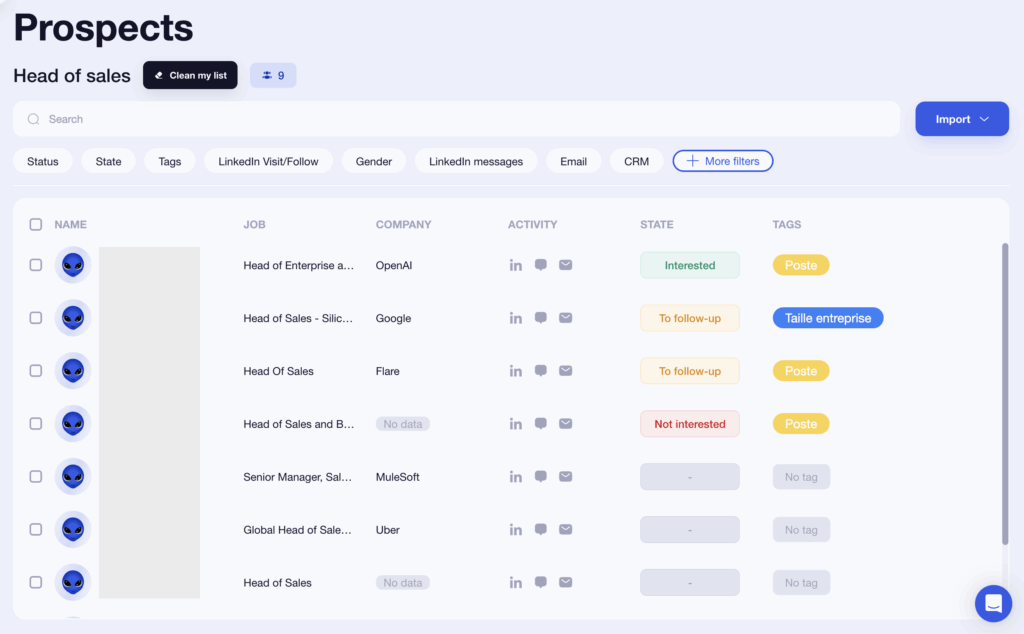
All you have to do is launch a targeted sequence!
And bim, more relevant results, sent to the right people, without wasting time.
And above all, you maintain a high level of quality while automating (whatever you want, after all). 😇
3) Lead prioritization
The next step is to identify leads with high conversion potential, based on the data you collect (purchase signals, online behavior, firmography). In short, indicators that let you know who’s ready, and who’s not. 👀
Okay, but how do I process these leads in my prospecting tool? 🤔
Well, with Waalaxy, you can :
- Organize your leads into targeted lists.
- Create manual tags (e.g.“hot“, “lukewarm”, “to be relaunched”).
- Segment your contacts according to precise search criteria (sector, position, company size).

4) Customized approaches
Have you ever responded to a message with a generic approach? NO.
Well, with this strategy, you’ll be able to personalize your messages quickly and easily, let me explain.
Waalaxy lets you add dynamic variables to your sequences:
- First name.
- Last name.
- Company name.
For example, you can send this type of message. 👇🏼
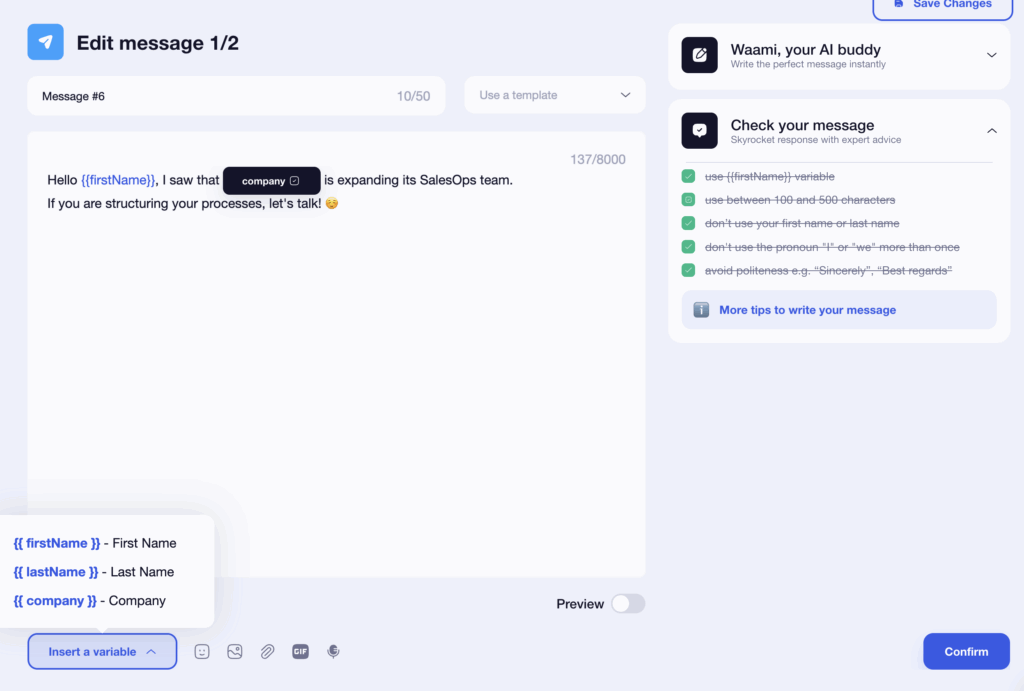
5) Task automation
Once your leads have been enriched, qualified, segmented and scored (the list goes on 😅 ), you can fully automate the prospecting process:
- Add the contact from LinkedIn or a file.
- Automatic launch of a sequence (profile visit, connection request, personalized messages).
- Programmed follow-up if no response.
- Automatic exit as soon as interaction is detected.
Basically, you can create different workflows depending on the type of prospect.
It’s all fluid, the data decides and Waalaxy executes.
6) Performance analysis
I didn’t lose you, did I? Yes, you did.
Last but not least, measure, analyze and optimize. 🪄
With Waalaxy, you have access to the following metrics:
- Open rate.
- Response rate.
- Click-through rate.
- Volume of leads engaged.
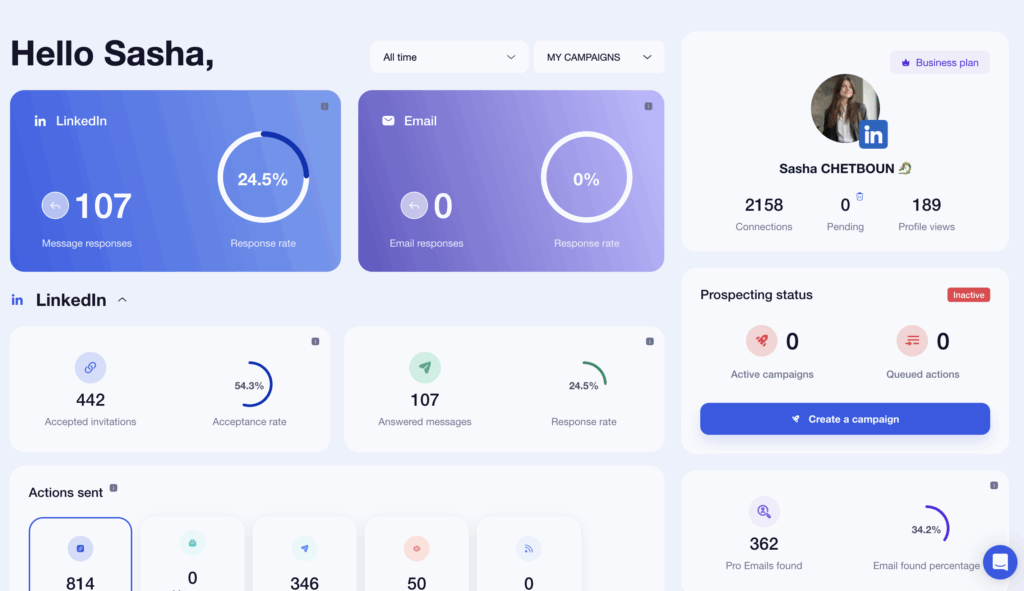
You will be able to :
- Adjust your messages according to the numbers.
- Test new segments.
- Relaunch campaigns only on the best profiles.
In short, analysis is essential if you want to seize opportunities. 👀
4 examples of Sales Intelligence
Theory is all very well, but what counts is taking action!
To inspire you to take the plunge, here are 4 examples of use cases you can integrate into your sales strategy right now. 😇
Theory is all very well. But what counts is what you can actually do with Sales Intelligence in your day-to-day prospecting and customer relations.
Here are 4 powerful use cases to integrate into your sales strategy right now.
1)Outbound prospecting
If you don’t know what this is, it’s actively seeking out prospects who don’t know you yet.
It’s the opposite of inbound marketing, where prospects come to you.
Cold prospecting, without context, is risky, you waste time, you annoy targets and above all, your messages go unnoticed…
That’s where Sales Intelligence comes in! 🎮
It enables you to identify companies that are in a favorable phase for you to make contact.
Basically: ⬇️
- Active recruitment.
- Fundraising.
- New markets.
- Change of management.
- Competitor tool installed.
For example ⭢ you offer a SaaS solution for sales teams. With this strategy, you spot a start-up recruiting 5 salespeople in 2 months. 🤩
So you can offer support at the right time, with the right message. 💬
2) Nurturing
Nurturing is the art of keeping in touch with leads who are not yet ready to buy, but who may become so in the coming months.
In B2b, not all prospects sign on the first date (if they did, it would be too good to be true 😅 ).
Some need time, additional information, internal validation – in short, a lot of things!
With this strategy, you’ll be able to spot changes in a prospect’s behavior:
- 🔵 Repeatedly opening your e-mails.
- 🔵 Returning to the site.
- 🔵 Viewing your pricing page.
- 🔵 Reacting to a LinkedIn post.
- 🔵 Change of position.
Basically, rather than relaunching “blindly” every 3 months, you act at the right time, with content tailored to their level of interest (a useful article, a case study, a customer testimonial or an invitation to a webinar. 🎥
For example ⭢ a prospect downloaded a white paper 6 months ago. Since then, nothing.
You notice that he comes back to your site and visits your features page three times in one week. 🤔
You get the idea, it’s a good time to get back in touch with a targeted message. 🎯
3) Account-Based Marketing
Account-Based Marketing (ABM) is an ultra-targeted approach to marketing and sales. 👀
Rather than addressing a broad market, you focus on a few nugget accounts with high conversion potential (they’ll be your darlings). 🔄
For ABM to work, you need to know for each account: 👇🏼
- Who are the decision-makers?
- What are their current challenges?
- What’s their tech stack?
- Where are they in their development?
- What signals might indicate a future need?
With Sales Intelligence, you’ll be able to build up a complete “descriptive file“, in order to :
- 1️⃣ Identify the right contacts to target on LinkedIn.
- 2️⃣ Follow their news.
- 3️⃣ Adapt your campaigns accordingly.
For example ⭢ you target marketing directors of e-commerce companies with over 100 employees.
One of your strategic accounts has just opened a B2B marketplace and is recruiting an acquisition manager.
So you can launch an ultra-personalized campaign around strategic changes. 👀
4) Customer Success
Customer Success isn’t just about answering tickets, it’s also about creating ongoing value for the customer (and that means keeping an active watch). 🤫
With this strategy, you can track metrics related to your accounts:
- Sales evolution.
- Changes in organizational structure.
- New projects.
- Buyout or merger.
- International expansion.
This lets you know when to offer an upsell, a cross-sell or even a move upmarket.
For example ⭢ you have a SaaS customer who uses your solution in just one country. You learn via LinkedIn that he’s opening an office in Spain. This could be the right time to offer him a license extension, or local support. 🤷🏽♀️
How about a recap?
A few years ago, B2B prospecting was a bit like rowing a boat across the sea. 🚣🏼♀️
But the tide has turned. ⛴️
Today, those who succeed in their strategy are those who understand who they’re talking to, who know when to knock, and who use the right data to say the right thing. 😇
Sales Intelligence is not an option, but a new way of thinking about sales. 🤝🏽
You don’t need to be a multinational with 25 tools to succeed.
You just need to know where to look, what to observe, and how to activate this data in your prospecting tools. ⚒️
So yes, it takes a little effort and intention.
But once you’ve had a taste of this strategy, you’ll never go back. 👀
Frequently asked questions
What is business intelligence?
Sales Intelligence refers to all the data and sales intelligence tools that enable a company to optimize its prospecting, sales and customer relations. 🤝🏽
It combines data :
- 1️⃣ Firmographic (sector, size, sales).
- 2️⃣ Behavioral (pages visited, emails opened).
- 3️⃣ Contextual (fund-raising, recruitment, change of management).
The objective? Identify the right accounts to contact, at the right time, with the right message. 💬
Sales Intelligence refers to all the data and tools that enable a company to optimize its prospecting, sales and customer relations.
It combines firmographic data (sector, size, sales…), behavioral data (pages visited, emails opened…) and contextual data (fundraising, recruitment, change of management…).
The aim? Identify the right accounts to contact, at the right time, with the right message. 🎯
What are the 4 types of intelligence?
A Sales Intelligence strategy generally relies on 4 key types of data:
- Firmographic data.
- Technographic data.
- Behavioral data.
- Contextual data.
Put them together, and you’ve got ultra-efficient prospecting campaigns. 😇
That’s it, you know all about sales intelligence, see you soon! 👋


